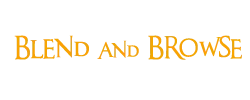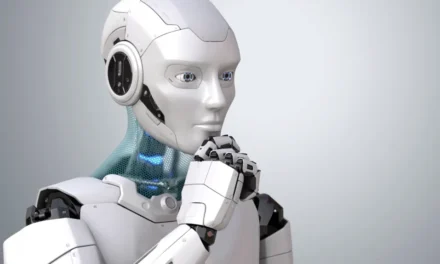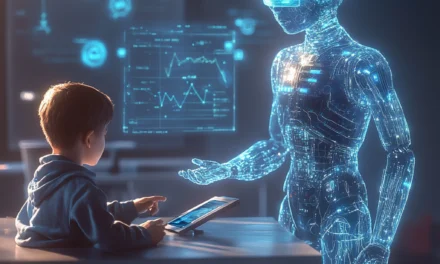Demographic change poses a huge challenge for German companies: By 2036, around 16.5 million baby boomers will reach retirement age. With them, not only does an entire generation disappear from the labor market – for decades of specialized knowledge, a precious experience and a deep understanding of the process threatens to be lost. The situation is very similar in other European countries.
Particularly critical: so far, many organizations have not developed a systematic strategy to guarantee knowledge of their experienced employees and transmit them to the next generation. There are proven and tested methods and digital tools with which knowledge transfer can be effectively designed. In this article, we show you how to actively approach the imminent know-how in your business and preserve important expert knowledge for the future.
Challenges in knowledge transfer
In practice, the successful transfer of expert knowledge often fails to five central obstacles that companies must recognize early and strategically:
-
Time pressure: Between the activities of the operational day and the approaching pension, there is often not enough time for a structured knowledge transfer.
-
Implicit knowledge: Experience and intuitive actions are difficult to verbalize and document. See also ours Implicit and explicit knowledge guide.
-
Motivation of people involved: Exceptional employees do not always see the added value in the transmission of their knowledge of years.
-
Missing system: Many companies have no clear processes and the infrastructure necessary to secure knowledge.
-
Lack of resources: Limited staff and financial resources make it difficult to implement sustainable knowledge transfer programs.
Change of generation vs change of jobs
The fact that an employee finally leaves the company or changes work within the company has a major impact on the implementation of knowledge transfer.
|
Mainly long-term processes (6-24 months) because retirement can be planned |
Often at short notice (2 to 8 weeks), because notice periods or internal change offer little delay |
|
|
Decades of experience and implicit knowledge |
Focus on current processes, contacts and current projects |
|
|
Perhaps less motivation of the excretory (“after me the deluge”) |
Higher will to cooperate, because there is generally additional contact in the company |
|
|
Different working methods and digital affinity between generations |
A more similar understanding of working methods and communication channels |
|
|
Final loss of knowledge after the pension |
Knowledge generally remains in the company, only available in a different position. |
Know how to transfer from old to young
The transfer of knowledge between experienced employees and the young generation presents specific challenges to companies, but also offers unique opportunities. Longtime professional experience includes not only professional know-how, but also precious implicit knowledge such as intuition for critical situations, informal networks and proven problem solving strategies.
A successful generational transfer requires a well thought out concept that takes into account the different work and learning styles of the two age groups. While older employees often rely on personal exchange and traditional documentation, young colleagues often prefer digital tools and interactive learning formats. Art lies in the combination of these different approaches.
The proven methods are, for example:
-
Tandem programswhere experienced and young employees work in close collaboration for several months.
-
Modern technologies like Video tutorials or digital knowledge bankswhich permanently guarantee the knowledge transmitted.
-
Appreciable atmosphere: Older employees must be respected as experts, while, at the same time, the new perspectives and the digital skills of the young generation are recognized.
The process takes time and should start early, ideally two to three years before the planned. Regular feedback discussions and success measures help continuously optimize the transfer and guarantee that critical knowledge is not lost.
Avoid loss of know-how when you change your jobs
When employees leave the company or the department, precious knowledge is often lost. This loss of know-how can have serious consequences for organizations, because important processes, customer relations and internal processes are assigned.
Early transfer planning plays a central role. As soon as the cessation of an employee is known, a structured transfer process must be launched. This includes documentation of work processes, contacts and relevant knowledge of the project. Control lists and standardized transfer protocols can help not ignore important aspects.
Ideally, the successor should always be trained in cooperation with the outgoing employee. In this phase, important experiences, tips and implicit knowledge can be transmitted directly. In addition, the creation of a digital knowledge database is recommended, in which information, documentation and important best practices are centrally stored.
Preventive measures are also important: the creation of representative regulations and job rotation programs guarantees that knowledge is distributed on several shoulders. Regular team meetings and inter-departmental exchanges also promote the transfer of expertise throughout the company.
The role of corporate culture should not be underestimated either. The employees motivate an open communication culture and the appreciation of the exchange of knowledge to actively transmit their know-how not only when leaving the company.
Numerically record business knowledge
Knowledge of developing and maintaining knowledge in a targeted and systematic way can be a competitive advantage in itself. Not only does short -term knowledge protection for personnel changes, but also long -term reception of the business of the company benefit from digital processes in knowledge management.
The implementation of a digital Knowledge management system which records structured and implicit knowledge. Using collaboration tools, Wikis and intelligent document management systems, work processes, process knowledge and project experiences can be systematically documented and classified. This allows quick access to relevant information and simplifies the familiarization of new employees.
Continuous care and updating the digital knowledge base is particularly important. To this end, clear responsibilities must be defined and regular updates are planned. Recording must be as useful as possible, for example through standardized models, video tutorials or audio records for expert discussions. The use of AI -supported tools for automatic records and liaison content can also increase knowledge recording efficiency.
Ideally, a well -maintained digital knowledge base is the business level. It thus constitutes the basis of the sustainable development of companies and ensures the continuity of important commercial processes.
Final reflections
The requirements for the management of a company increases. Know -chow Loss is a threat to management, which can also be perceived as an opportunity. Companies that can digitize Know-how will develop a clear advantage in their markets in the coming years. Although the mixture of knowledge leads to more efficiency, more time can spend in the development of innovations.





